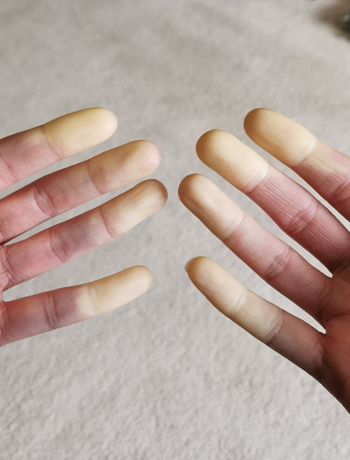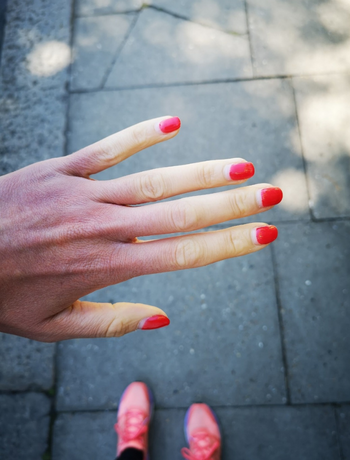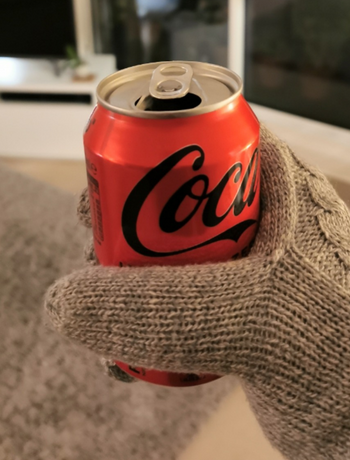EDS and Raynauds
Raynaud's dysautonomia, also known as primary or idiopathic Raynaud's syndrome, is a medical condition which affects the blood vessels in the fingers, toes, nose, and ears.
Primary or secondary
In the presence of peripheral neuropathy or connective tissue diseases such as EDS or scleroderma, it is referred to as secondary Raynaud's and can be more severe. In both cases, the blood vessels in the fingers, toes, nose, and ears overreact to cold, changes in temperature or emotional stress, causing them to narrow.
Vasospasms reduce or even stop the blood flow to these areas. This contraction causes hypoxia: lack of oxygen to the affected tissues. As a result, the areas are cold to touch and the individual will experience numbness, tingling, pain, and changes in skin colour, typically starting with white or blue discolouration, and followed by redness as blood flow returns. An attack can last anywhere from a few minutes to several hours in extreme cases.
In order to distinguish between primary and secondary Raynaud's, a capillaroscopy may be performed by the doctor. This entails examining the skin at the nail bed and inspecting it under a microscope to detect any abnormal or enlarged capillaries. Additionally, a blood test may be conducted to search for antinuclear antibodies or measure the erythrocyte sedimentation rate, as these may indicate the presence of autoimmune disorders or other inflammatory processes.



The link between EDS and Raynauds
EDS is multisystemic in nature. The manifestations of Hypermobile type EDS (hEDS) that are not directly found in the joints can include cardiovascular, autonomic nervous system, neurological, ocular and gastroinstestinal issues. Raynaud’s can be part of this range of symptoms. (See our page on symptoms for more info.)
EDS can affect the production or processing of collagen, a major component of connective tissue. Collagen provides strength and structure to many tissues in the body, including blood vessels. Mutations in genes that affect collagen production or processing can lead to weakened or abnormal blood vessels, which may contribute to the development of Raynaud's phenomenon. (More to come on collagen in a later article.)
The precise cause of Raynaud's phenomenon remains unclear, although both neural and intravascular mechanisms are believed to play a role in the disease's progression. The role of the autonomic nervous system is a subject of ongoing debate, with special emphasis on the potential overactivity of its sympathetic component.
This aspect of dysautonomia in relation to the condition refers to the malfunction of the autonomic nervous system, which regulates involuntary functions such as blood pressure, heart rate, and body temperature. In Raynaud's dysautonomia, the autonomic nerves that control blood flow to the extremities are thought to be overly sensitive or hyperactive. This hyperactivation triggers the vasoconstriction, narrowing of blood vessels even in response to even mild stimuli.
*It's important to note that not everyone with EDS will develop Raynaud's phenomenon, and not everyone with Raynaud's phenomenon has EDS or another connective tissue disorder.
Exercise as a management tool
Regular exercise can be helpful in managing the symptoms of this condition and is often prescribed by doctors to help alleviate and prevent them.

Improved circulation: Exercise increases blood flow to the body, improving circulation by not only strengthening the arterial walls., but also by causing the blood vessels to dilate, allowing more blood to flow to the extremities.
Increased tolerance to cold: People with Raynaud's syndrome often have low tolerance to cold temperatures, which can trigger symptoms. Researchers from the University of Guelph and the University of Copenhagen conducted a study published in The Journal of Physiology which found that exercise can help improve the body’s tolerance to extreme cold and maintain body heat for longer periods.
Reduced stress: Stress is a common trigger for Raynaud's syndrome, and regular exercise can help to reduce stress levels. Exercise releases neurochemical endorphins via the pituitary gland, through the spinal cord and from other areas of the nervous system to calm us down in times of both physical and emotional stress.
Improved overall health: Regular exercise has a wide range of health benefits, including improved cardiovascular health, reduced risk of chronic disease, and improved immune function. These benefits can help to improve overall health and wellbeing, which can in turn help to manage the symptoms of Raynaud's syndrome.
Weight management: Maintaining a healthy weight is important for managing the symptoms of Raynaud's syndrome, as excess weight inhibits proper circulation.
Measures to potentially avoid triggers
Whether primary or secondary Raynaud's, it's important to try and manage the attacks to prevent long term damage to the blood vessels.
Wearing gloves, socks, and hats will help to reduce exposure to cold. Sounds obvious, but it’s essential to keep the extremities warm. It’s also a good idea to cover the wrists and neck. Hand and foot warmers are also readily available and can provide extra warmth.
If you love exercising outdoors, keeping warm is especially important. Cycling gloves, running gloves and even wetsuit gloves if you’re a fan of swimming or water sports, will not only minimise the potential of an attack, but will certainly increase your enjoyment! They may even be necessary in an air-conditioned gym. The simple change in temperature can be enough to trigger an episode. Be prepared.
Ensure your clothing isn’t so tight around the wrists or ankles that it may exacerbate the issue by restricting circulation to the extremities.
Where possible, avoid sudden shifts between hot and cold environments, such as entering an air-conditioned room during summer or handling frozen foods without protection.
Limit consumption of caffeine and alcohol and avoid smoking.
Stress management is an important aspect of preventing Raynaud's attacks. When the body experiences stress, it can cause the blood vessels to constrict, which can trigger Raynaud's phenomenon. Practicing relaxation techniques such as deep breathing, meditation, plenty of exercise and adequate sleep can help to reduce stress levels.
Hydration is an essential factor in maintaining good circulation throughout the body. Proper hydration helps to keep the blood vessels and the circulatory system functioning efficiently, allowing the blood to flow smoothly and effectively. Dehydration can cause the blood to thicken, which make it more difficult for the blood to flow through the body. Staying well-hydrated is essential in maintaining healthy circulation and optimal overall health.
In cases where lifestyle modifications and preventative measures are ineffective, a doctor may recommend prescription medication to alleviate Raynaud's phenomenon. Medications such as calcium channel blockers and vasodilators work by dilating the blood vessels and reducing the frequency of symptoms.
If cold exposure triggers Raynaud's phenomenon, it is important to move to a warm area and massage the affected area. Additionally, running affected hands or feet under warm water can help to improve blood circulation. Try not to increase the temperature too rapidly as this can further damage the tissue.
If you want to find out more, just drop us a message. The photos of the hands are all of Claudine. She is very well placed to offer a knowledgeable perspective of living with Raynauds!
